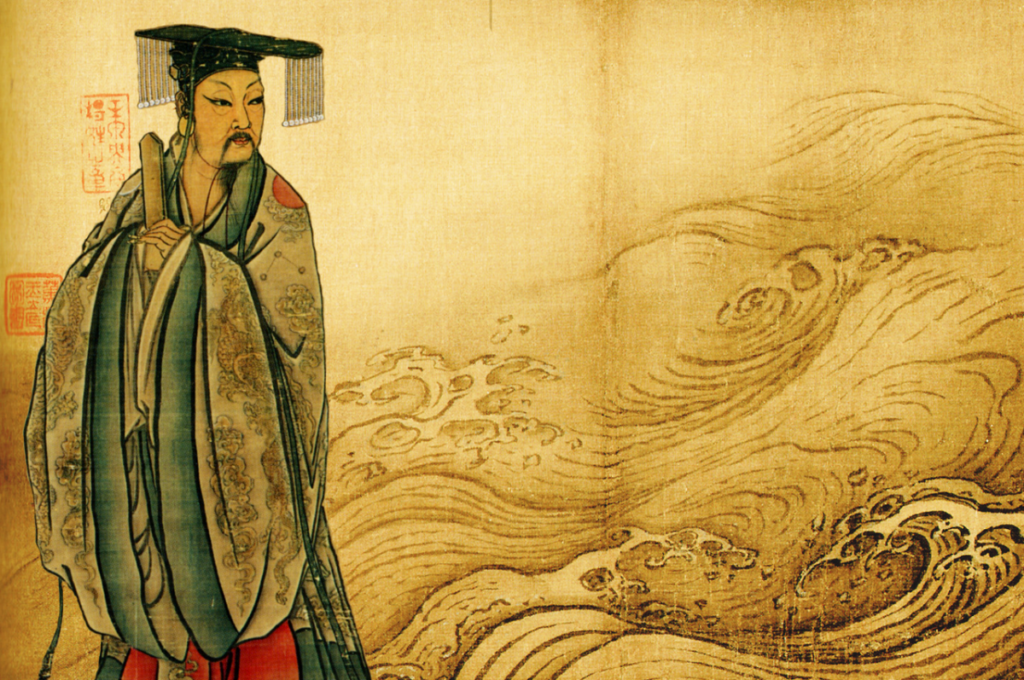The legend of Yu the Great

Currently for social studies I am studying the complete history of China, all the way from the earliest formation stories to the Terracotta Warriors. Currently, one of the most interesting parts of this curriculum has been the origin story of China’s First dynastic power, the Xia Dynasty. Legends tell the story of a man named Yu the Great establishing this dynasty after saving his land from a massive flood. Although much of The West has never heard of him, Yu the Great is a definitive and instrumental factor of Chinse history, tradition, and sheer existence. Without further ado, the legacy of Yu the Great.
Long before the Xia Dynasty and even Yu the Great, there were a group of mythical leaders known as the Three Sovereigns and Five Emperors. The Three Sovereigns are considered in mythical stories to be demigods, or “supreme beings.” These three individuals were the Heavenly Sovereign (Fuxi), the Earthly Sovereign (NuWa), and the Human Sovereign (Shenong). According to mythological records, Fuxi reigned for 18,000 years and had twelve heads. The Earthly Sovereign NuWa had eleven heads, was the king of fire, caused the sun and the moon to align into their proper orbits, and also reigned for 18,000 years. Lastly, Shenong only possessed a mere seven heads but in turn reigned for a supreme 45,000 years. Sorry Queen Elizabeth II.
After the Three Sovereigns are the Five Emperors. These leaders, Huangdi, Zhuanxu, Ku, Yao, and Shun are believed to be the direct predecessors to the Xia Dynasty. Like the Three Sovereigns, the Five Emperors are essential to the development of Chinese culture. While the Three Sovereigns are credited with the development of the material Earth, the Five Emperors are instrumental to the evolution of Chinese culture and tradition. The first of these emperors is Huangdi, or the Yellow Emperor. Stories credit him with the invention of carts, boats, wooden houses, bows and arrows, money, and the basis of governing. After Huangdi’s reign, his grandson and successor Zhuanxu crafted both the first calendar and the first piece of composed music. However, the earliest instruments wouldn’t be invented until the succeeding reign of Emperor Ku. He also reportedly traveled via dragon back. In comparison to the earlier three leaders, the later Emperors Yao and Shun may have actually existed. Compared to the Three Sovereigns, their collective 31 heads, and 81,000-year reign, the Five Emperors are only considered semi-mythical. Although their accomplishments may be slightly exaggerated, these leaders might have been real-life individuals, or at least Emperors Yao and Shun.
Speaking of Yao and Shun, we transition to the precursor years of the Xia Dynasty. During the reign of Emperor Yao, a massive flood suddenly struck. The Great Flood was massive, killing countless and leaving none of Yao’s territory unaffected. Desperate to stop the flooding, Yao appointed a man named Gun to oversee flood control projects. Over the next nine years, Gun worked to build a series of dams and embankments meant to block the water. However, he was never able to overcome the constant flooding. According to legends, Gun stole some magic soil from the gods and used it to build the dams. As the water levels rose, the dams would also rise. However, they eventually collapsed, resuming the flow of the disastrous flood.
Due in part to Gun’s failure to stop the flooding, Emperor Yao stepped down. In turn, Shun ascended to the throne. With the floods continuing to ravage the land, Gun’s son Yu was appointed to save the Yellow River Valley. Unlike his father, who wanted to block the water, Yu sought to divert the river’s flow. Now in charge, Yu spent thirteen years leading the construction of vast canals and other infrastructure projects meant to divert the water. After tirelessly working, the flooding was finally negated. As a reward for his valiant efforts, Yu was gifted political power. After the death of Emperor Shun, Yu would ascend to the throne, becoming Yu the Great and the first leader of the Xia Dynasty.
Compared to numerous disaster-related myths in western culture, the story of Yu the Great is vastly different. The main contrast is the cause of the flood. Although the Great Flood is viewed in Chinese tradition as a divine occurrence, it isn’t interpreted as a punishment for humanity. Nearly every disaster legend in western culture revolves around it being a punishment for “sinful” behavior. The second difference are the moral takeaways and overall message of the story. Compared to western myths, which are mostly about heaven’s dominion over the Earth, the legend of Yu the Great is about intellect, diligence, community, and overall moral character. In the flood legends, Yu is appointed to save the world, and he does. Using his intellect, Yu finds his own solutions without any divine instruction. He also stands as a prime model for leadership. Over the thirteen years, Yu works tirelessly to improve the lives of his fellow people. For example, during those thirteen years, he never once returns home, even passing it on three separate occasions. Compared to the mythology of western culture, the Great Flood myth isn’t meant to be a warning for “sinful behavior” or a sign of heaven’s dominance. Instead, it teaches leadership and moral character. Today, Yu the Great stands in China as both a major historic figure and an example of virtue.